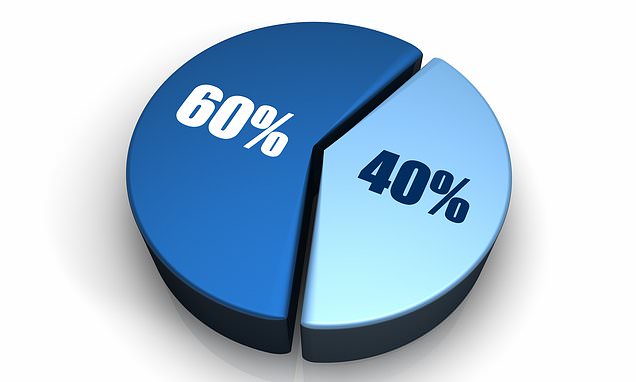
By Daily Mail City & Finance Reporter
21:50 03 Mar 2023, updated 21:50 03 Mar 2023
In this series, we bust the jargon and explain a popular investing term or theme. Here it’s 60/40.
What is this?
For more than 50 years, there has been a belief that the perfect investment portfolio was 60 per cent of shares and 40 per cent of bonds.
This standard allocation model was deemed ideal for individuals, pension funds and other institutions who wanted diversification and a measure of protection against volatility. Some argued for a 50/50 split, but the 60/40 model gained ascendancy.
Who thought this up?
US economist Harry Markowitz devised the strategy in 1952 as part of his celebrated ‘Modern Portfolio’ theory.
It is said that 96-year-old Nobel prize winner did not expect his idea to be taken as gospel and may not have applied the principle to his own money, but it is uncertain whether these claims have any validity. For more information, see hmarkowitz.com.
What’s the rationale behind this?
The performance of bonds and shares should be ‘uncorrelated’. That is, when shares rise, bond prices fall and vice-versa.
Bonds also provide a reliable source of income on top of dividend payouts. During a period, known in stock market circles as ‘The Great Moderation’, the mix stood the test of time, providing decent returns and a measure of protection against risk.
During the dotcom crisis bonds softened the blow of the descent in share prices.
So what happened in 2022?
Portfolios with the 60/40 mix fell as much as 20 per cent. Shares and bonds tumbled in tandem, as interest rates were raised in the US and the UK and inflation surged as a result of the energy crisis. Rising interest rates hit share prices, particularly those in technology companies. Meanwhile inflation inflicted damage on the value of bonds.
What was impact on investors?
Many were unprepared. But some institutions had moved away from 60/40, as academics highlighted its shortcomings.
They argue that it was devised for a different era when small shareholders rather than institutions dominated the stock markets, and before issues such as ESG (environment, social and governance) considerations drove stock-picking decisions.
Related Articles
HOW THIS IS MONEY CAN HELP
Is it R.I.P for 60/40?
At the beginning of the year, many commentators argued it was no longer relevant and should be consigned to history.
But 60/40 still has its enthusiasts. They argue that although 2022 was a dismal year 60/40 is a proven formula over the long-term and will stage a comeback in 2023.
These supporters have been encouraged by signs that inflationary pressures are weakening. Investors have been returning to bond funds, attracted by yields on offer.
How can I diversify now?
A broad spread of UK and international shares and bonds still makes sense.
But critics of 60/40 contend you should have also have money in infrastructure, property and private equity, that is, unlisted companies. These are held by some private equity investment trusts.
The experience of 2022 shows it can be hazardous to buy and hold, and assume it will turn out all right.
This may be the case in the end – but there could be sleepless nights along the way.
Some links in this article may be affiliate links. If you click on them we may earn a small commission. That helps us fund This Is Money, and keep it free to use. We do not write articles to promote products. We do not allow any commercial relationship to affect our editorial independence.






